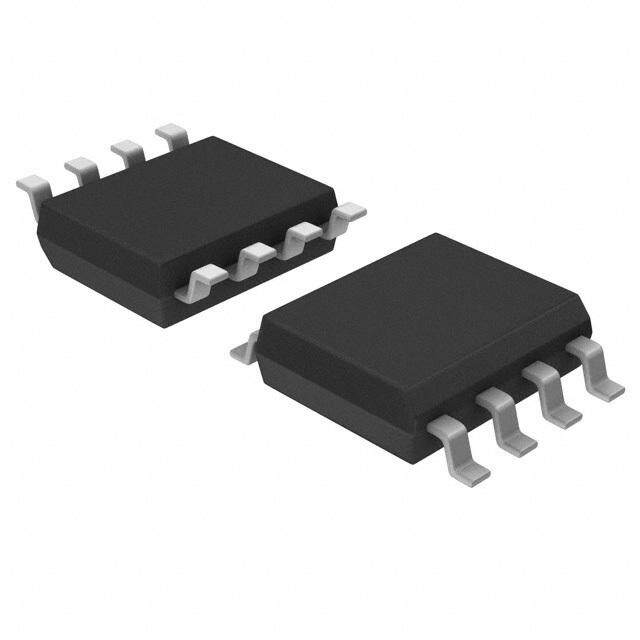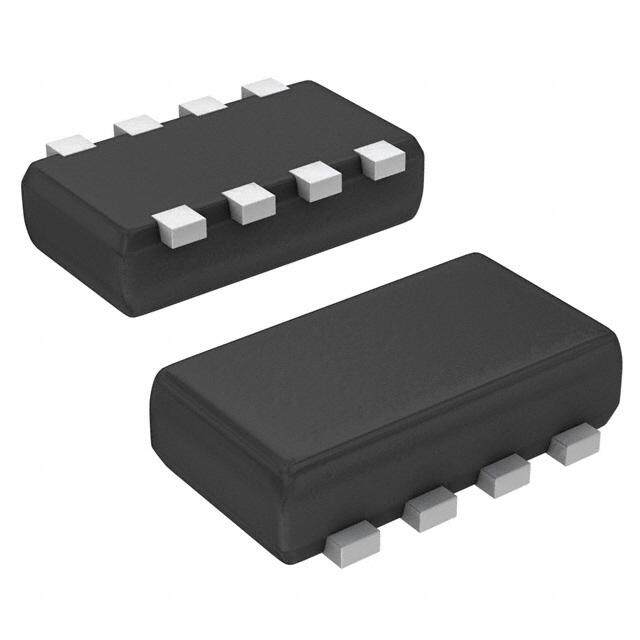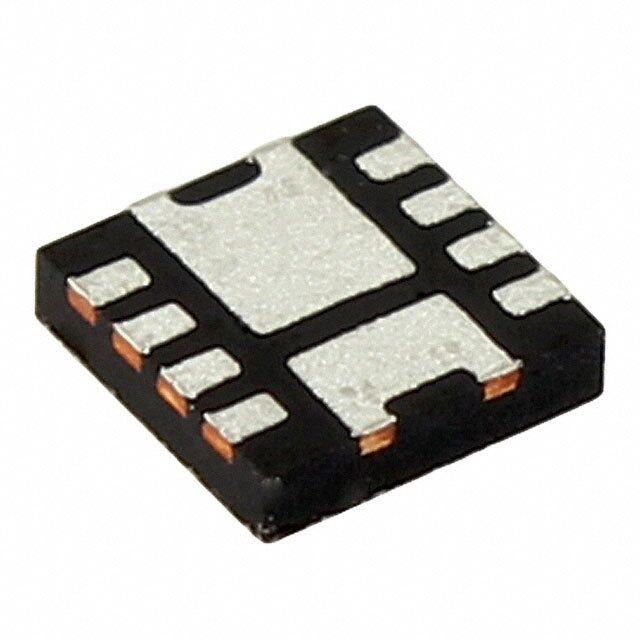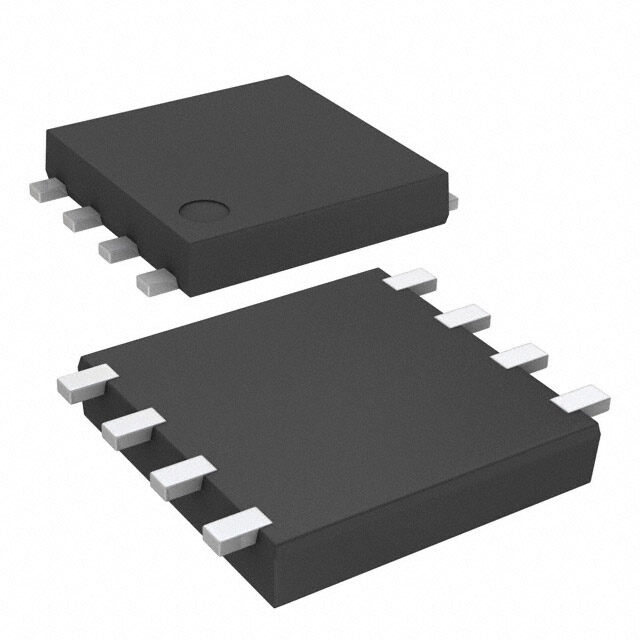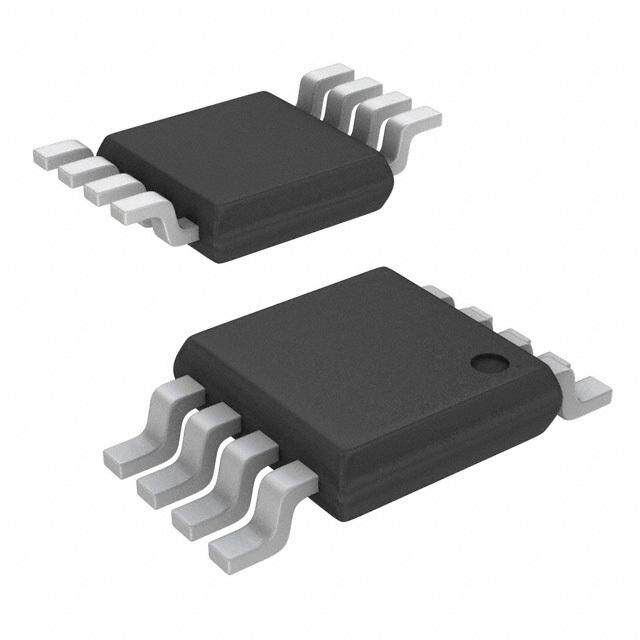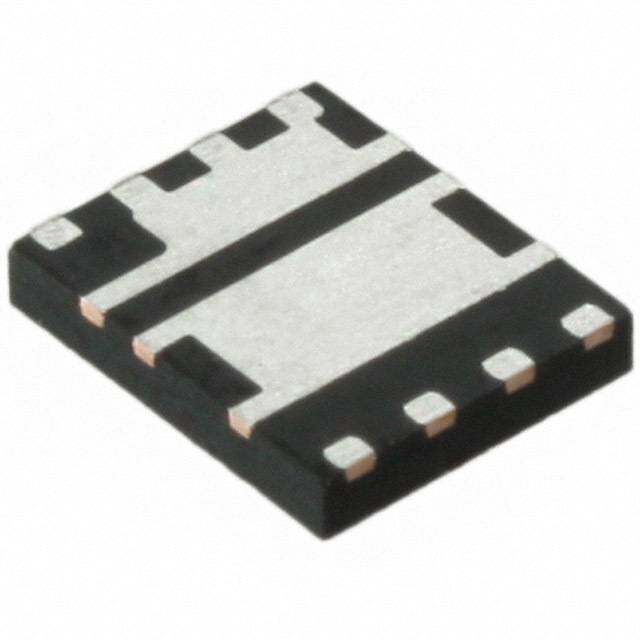ICGOO在线商城 > 分立半导体产品 > 晶体管 - FET,MOSFET - 阵列 > SI7900AEDN-T1-GE3
- 型号: SI7900AEDN-T1-GE3
- 制造商: Vishay
- 库位|库存: xxxx|xxxx
- 要求:
| 数量阶梯 | 香港交货 | 国内含税 |
| +xxxx | $xxxx | ¥xxxx |
查看当月历史价格
查看今年历史价格
SI7900AEDN-T1-GE3产品简介:
ICGOO电子元器件商城为您提供SI7900AEDN-T1-GE3由Vishay设计生产,在icgoo商城现货销售,并且可以通过原厂、代理商等渠道进行代购。 SI7900AEDN-T1-GE3价格参考¥2.40-¥2.40。VishaySI7900AEDN-T1-GE3封装/规格:晶体管 - FET,MOSFET - 阵列, 2 N 沟道(双)共漏 Mosfet 阵列 20V 6A 1.5W 表面贴装 PowerPAK® 1212-8 Dual。您可以下载SI7900AEDN-T1-GE3参考资料、Datasheet数据手册功能说明书,资料中有SI7900AEDN-T1-GE3 详细功能的应用电路图电压和使用方法及教程。
| 参数 | 数值 |
| 产品目录 | |
| 描述 | MOSFET 2N-CH 20V 6A PPAK 1212-8 |
| 产品分类 | FET - 阵列 |
| FET功能 | 逻辑电平门 |
| FET类型 | 2 N 沟道(双)共漏 |
| 品牌 | Vishay Siliconix |
| 数据手册 | |
| 产品图片 |
|
| 产品型号 | SI7900AEDN-T1-GE3 |
| rohs | 无铅 / 符合限制有害物质指令(RoHS)规范要求 |
| 产品系列 | TrenchFET® |
| 不同Id时的Vgs(th)(最大值) | 900mV @ 250µA |
| 不同Vds时的输入电容(Ciss) | - |
| 不同Vgs时的栅极电荷(Qg) | 16nC @ 4.5V |
| 不同 Id、Vgs时的 RdsOn(最大值) | 26 毫欧 @ 8.5A,4.5V |
| 供应商器件封装 | PowerPAK® 1212-8 Dual |
| 其它名称 | SI7900AEDN-T1-GE3CT |
| 功率-最大值 | 1.5W |
| 包装 | 剪切带 (CT) |
| 安装类型 | 表面贴装 |
| 封装/外壳 | PowerPAK® 1212-8 双 |
| 标准包装 | 1 |
| 漏源极电压(Vdss) | 20V |
| 电流-连续漏极(Id)(25°C时) | 6A |

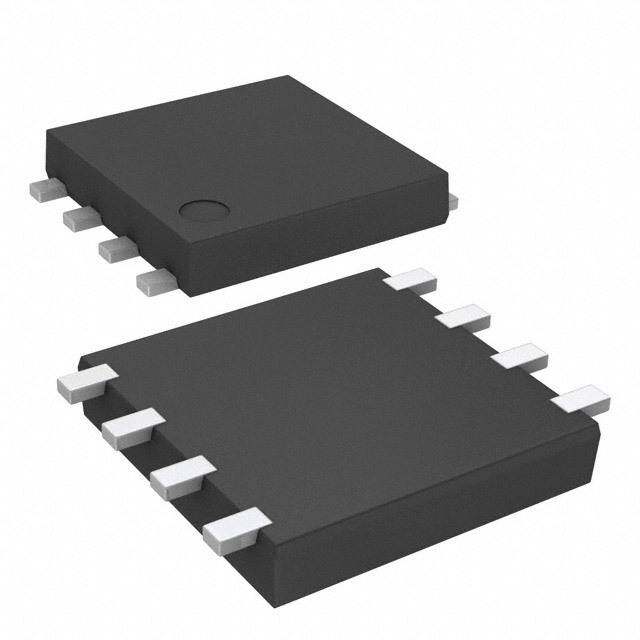
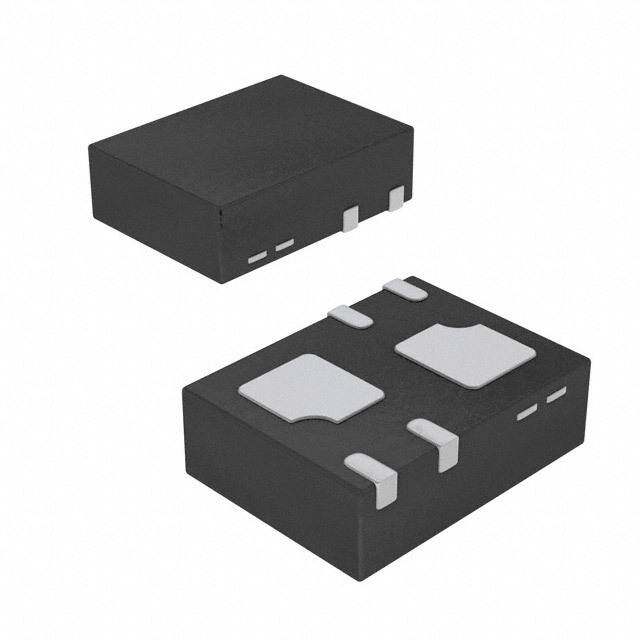
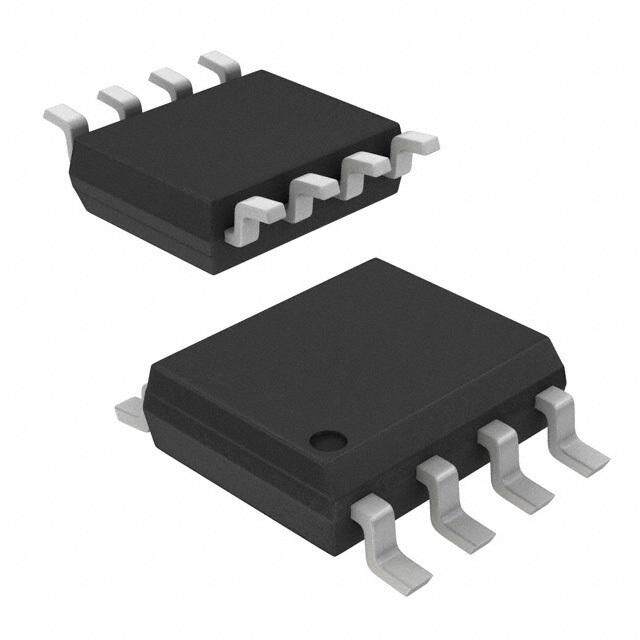
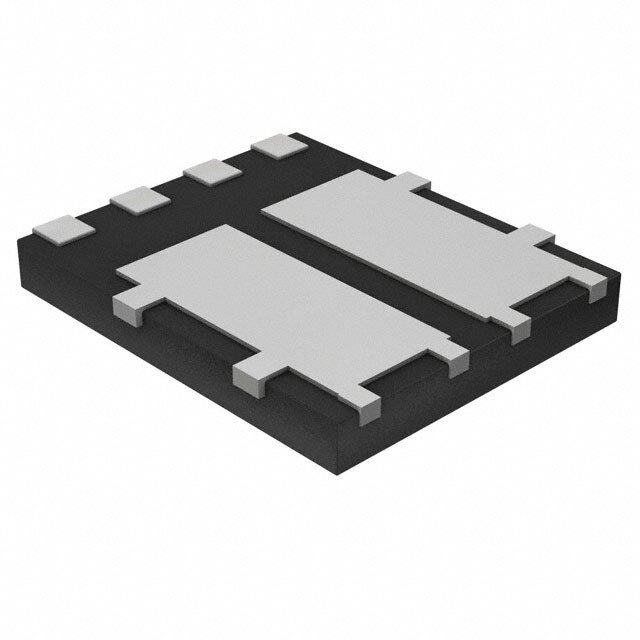


- 商务部:美国ITC正式对集成电路等产品启动337调查
- 曝三星4nm工艺存在良率问题 高通将骁龙8 Gen1或转产台积电
- 太阳诱电将投资9.5亿元在常州建新厂生产MLCC 预计2023年完工
- 英特尔发布欧洲新工厂建设计划 深化IDM 2.0 战略
- 台积电先进制程称霸业界 有大客户加持明年业绩稳了
- 达到5530亿美元!SIA预计今年全球半导体销售额将创下新高
- 英特尔拟将自动驾驶子公司Mobileye上市 估值或超500亿美元
- 三星加码芯片和SET,合并消费电子和移动部门,撤换高东真等 CEO
- 三星电子宣布重大人事变动 还合并消费电子和移动部门
- 海关总署:前11个月进口集成电路产品价值2.52万亿元 增长14.8%
PDF Datasheet 数据手册内容提取
Si7900AEDN Vishay Siliconix Dual N-Channel 20-V (D-S) MOSFET, Common Drain FEATURES PRODUCT SUMMARY • Halogen-free Option Available V (V) R (Ω) I (A) DS DS(on) D (cid:129) TrenchFET® Power MOSFET: 1.8 V Rated 0.026 at VGS = 4.5 V 8.5 (cid:129) New PowerPak® Package RoHS 20 0.030 at VGS = 2.5 V 8 - Low Thermal Resistance, R COMPLIANT thJC 0.036 at VGS = 1.8 V 7 - Low 1.07 mm Profile (cid:129) 3000 V ESD Protection APPLICATIONS (cid:129) Protection Switch for 1-2 Li-ion Batteries PowerPAK 1212-8 D1 D2 3.30 mm S1 3.30 mm 1 G1 2 S2 3 2.6 kΩ 2.6 kΩ G2 4 G1 G2 D 8 D 7 D 6 D 5 Bottom View S1 S2 Ordering Information:Si7900AEDN-T1-E3 (Lead (Pb)-free) Si7900AEDN-T1-GE3 (Lead (Pb)-free and Halogen-free) N-Channel N-Channel ABSOLUTE MAXIMUM RATINGS T = 25 °C, unless otherwise noted A Parameter Symbol 10 s Steady State Unit Drain-Source Voltage VDS 20 V Gate-Source Voltage VGS ± 12 Continuous Drain Current (TJ = 150 °C)a TTAA == 2855 °°CC ID 86..54 46.3 A Pulsed Drain Current IDM 30 Continuous Source Current (Diode Conduction)a IS 2.9 1.4 TA = 25 °C 3.1 1.5 Maximum Power Dissipationa PD W TA = 85 °C 1.6 0.79 Operating Junction and Storage Temperature Range TJ, Tstg - 55 to 150 °C THERMAL RESISTANCE RATINGS Parameter Symbol Typical Maximum Unit t ≤ 10 s 32 40 Maximum Junction-to-Ambienta RthJA Steady State 65 82 °C/W Maximum Junction-to-Case Steady State RthJC 2.2 2.8 Notes: a. Surface Mounted on 1" x 1" FR4 board. Document Number: 72287 www.vishay.com S-81544-Rev. C, 07-Jul-08 1
Si7900AEDN Vishay Siliconix SPECIFICATIONS T = 25 °C, unless otherwise noted J Parameter Symbol Test Conditions Min. Typ. Max. Unit Static Gate Threshold Voltage VGS(th) VDS = VGS, ID = 250 µA 0.40 0.9 V VDS = 0 V, VGS = ± 4.5 V ± 1 µA Gate-Body Leakage IGSS VDS = 0 V, VGS = ± 12 V ± 10 mA VDS = 20 V, VGS = 0 V 1 Zero Gate Voltage Drain Current IDSS µA VDS = 20 V, VGS = 0 V, TJ = 85 °C 20 On-State Drain Currenta ID(on) VDS = 5 V, VGS = 4.5 V 20 A VGS = 4.5 V, ID = 8.5 A 0.020 0.026 Drain-Source On-State Resistancea RDS(on) VGS = 2.5 V, ID = 8 A 0.022 0.030 Ω VGS = 1.8 V, ID = 7 A 0.026 0.036 Forward Transconductancea gfs VDS = 10 V, ID = 8.5 A 25 S Diode Forward Voltagea VSD IS = 2.9 A, VGS = 0 V 0.65 1.1 V Dynamicb Total Gate Charge Qg 10.5 16 Gate-Source Charge Qgs VDS = 10 V, VGS = 4.5 V, ID = 6.5 A 1.9 nC Gate-Drain Charge Qgd 1.8 Turn-On Delay Time td(on) 0.85 1.25 Rise Time tr VDD = 10 V, RL = 10 Ω 1.3 2.0 ns Turn-Off Delay Time td(off) ID ≅ 1 A, VGEN = 4.5 V, RG = 6 Ω 8.6 13 Fall Time tf 4.2 6.5 Notes: a. Pulse test; pulse width ≤ 300 µs, duty cycle ≤ 2 %. b. Guaranteed by design, not subject to production testing. Stresses beyond those listed under “Absolute Maximum Ratings” may cause permanent damage to the device. These are stress ratings only, and functional operation of the device at these or any other conditions beyond those indicated in the operational sections of the specifications is not implied. Exposure to absolute maximum rating conditions for extended periods may affect device reliability. TYPICAL CHARACTERISTICS 25°C, unless otherwise noted 10 10 000 1000 8 urrent (mA) 6 Current (A) 100 TJ = 150 °C Gate C 4 Gate 10 - -S SS 1 S G G I I 2 TJ = 25 °C 0.1 0 0.01 0 3 6 9 12 15 18 0 3 6 9 12 15 VGS -Gate-to-Source Voltage (V) VGS -Gate-to-Source Voltage (V) Gate-Current vs. Gate-Source Voltage Gate Current vs. Gate-Source Voltage www.vishay.com Document Number: 72287 2 S-81544-Rev. C, 07-Jul-08
Si7900AEDN Vishay Siliconix TYPICAL CHARACTERISTICS 25°C, unless otherwise noted 30 30 TC = - 55 °C 25 25 VGS = 5 thru 2 V 25 °C Drain Current (A) 1250 1.5 V Drain Current (A) 1250 125 °C - 10 - 10 D D I I 5 5 0 0 0 1 2 3 4 5 0.0 0.5 1.0 1.5 2.0 2.5 VDS-Drain-to-Source Voltage (V) VGS - Gate-to-Source Voltage (V) Output Characteristics Transfer Characteristics 0.06 5 VDS = 10 V 0.05 V) 4 ID = 6.5 A )Ω e ( esistance ( 0.04 urce Voltag 3 R o - On-on) 0.03 VGS = 1.8 V VGS = 2.5 V Gate-to-S 2 S( - D S R 0.02 VG 1 VGS = 4.5 V 0.01 0 0 5 10 15 20 25 30 0 2 4 6 8 10 12 ID-Drain Current (A) Qg - Total Gate Charge (nC) On-Resistance vs. Drain Current Gate Charge 1.6 20 VGS = 4.5 V 10 1.4 ID = 8.5 A e nc A) -On-Resistan)(Normalized) 11..02 ource Current ( 1 TJ = 150 °C TJ = 25 °C RDS(o -SIS 0.8 0.6 0.1 -50 -25 0 25 50 75 100 125 150 0 0.3 0.6 0.9 1.2 1.5 TJ - Junction Temperature (°C) VSD -Source-to-Drain Voltage (V) On-Resistance vs. Junction Temperature Source-Drain Diode Forward Voltage Document Number: 72287 www.vishay.com S-81544-Rev. C, 07-Jul-08 3
Si7900AEDN Vishay Siliconix TYPICAL CHARACTERISTICS 25°C, unless otherwise noted 0.05 0.4 ID = 250 µA 0.04 0.2 )Ω ce ( V) Resistan 0.03 ID = 8.5 A ariance ( 0.0 n- V - On) 0.02 GS(th) -0.2 S(o V D R 0.01 -0.4 0.00 -0.6 0 1 2 3 4 5 6 -50 -25 0 25 50 75 100 125 150 VGS - Gate-to-Source Voltage (V) TJ - Temperature (°C) On-Resistance vs. Gate-to-Source Voltage Threshold Voltage 100 200 Limited by RDS(on)* 160 10 1 ms A) er (W) 120 Current ( 1 10 ms w n Po 80 Drai 100 ms -D 1 s I 0.1 10 s 40 STinCg =le 2P5u °lsCe DC 0 0.01 0.1 1 10 100 0.001 0.01 0.1 1 10 VDS-Drain-to-SourceVoltage(V) Time (s) *VGS>minimumVGSatwhichRDS(on)isspecified Single Pulse Power, Junction-to-Ambient Safe Operating Area, Junction-to-Case 2 1 nt Duty Cycle = 0.5 e ctive Transimpedance 0.2 Notes: ed Effeermal I 0.1 0.1 PDM NormalizTh 0.05 1. Duty Cytc1le, tD2 = tt12 0.02 2. Per Unit Base = RthJA = 115 °C/W 3. TJM - TA = PDMZthJA(t) Single Pulse 4. Surface Mounted 0.01 10-4 10-3 10-2 10-1 1 10 100 600 Square Wave Pulse Duration (s) Normalized Thermal Transient Impedance, Junction-to-Ambient www.vishay.com Document Number: 72287 4 S-81544-Rev. C, 07-Jul-08
Si7900AEDN Vishay Siliconix TYPICAL CHARACTERISTICS 25°C, unless otherwise noted 2 1 nt Duty Cycle = 0.5 e e Transiedance 0.2 ctivmp 0.1 ed Effeermal I 0.1 0.05 zh aliT m or 0.02 N Single Pulse 0.01 10-5 10-4 10-3 10-2 10-1 1 Square Wave Pulse Duration (s) Normalized Thermal Transient Impedance, Junction-to-Case Vishay Siliconix maintains worldwide manufacturing capability. Products may be manufactured at one of several qualified locations. Reliability data for Silicon Technology and Package Reliability represent a composite of all qualified locations. For related documents such as package/tape drawings, part marking, and reliability data, see http://www.vishay.com/ppg?72287. Document Number: 72287 www.vishay.com S-81544-Rev. C, 07-Jul-08 5
Package Information www.vishay.com Vishay Siliconix PowerPAK® 1212-8, (Single / Dual) L H E2 K W D4 E4 θ 8 M 1 1 e Z 2 2 D1 D D2 D5 3 4 5 4b θ L1 E3 θ θ A1 Backside view of single pad L A H E2 K E4 c H 4 2 D 1 E1 Detail Z 2x) D1 E D3( 2 2 5 D D Notes 3 1 1. Inch will govern K 2 Dimensions exclusive of mold gate burrs D2 4b 3. Dimensions exclusive of mold flash and cutting burrs E3 Backside view of dual pad MILLIMETERS INCHES DIM. MIN. NOM. MAX. MIN. NOM. MAX. A 0.97 1.04 1.12 0.038 0.041 0.044 A1 0.00 - 0.05 0.000 - 0.002 b 0.23 0.30 0.41 0.009 0.012 0.016 c 0.23 0.28 0.33 0.009 0.011 0.013 D 3.20 3.30 3.40 0.126 0.130 0.134 D1 2.95 3.05 3.15 0.116 0.120 0.124 D2 1.98 2.11 2.24 0.078 0.083 0.088 D3 0.48 - 0.89 0.019 - 0.035 D4 0.47 typ. 0.0185 typ D5 2.3 typ. 0.090 typ E 3.20 3.30 3.40 0.126 0.130 0.134 E1 2.95 3.05 3.15 0.116 0.120 0.124 E2 1.47 1.60 1.73 0.058 0.063 0.068 E3 1.75 1.85 1.98 0.069 0.073 0.078 E4 0.034 typ. 0.013 typ. e 0.65 BSC 0.026 BSC K 0.86 typ. 0.034 typ. K1 0.35 - - 0.014 - - H 0.30 0.41 0.51 0.012 0.016 0.020 L 0.30 0.43 0.56 0.012 0.017 0.022 L1 0.06 0.13 0.20 0.002 0.005 0.008 0° - 12° 0° - 12° W 0.15 0.25 0.36 0.006 0.010 0.014 M 0.125 typ. 0.005 typ. ECN: S16-2667-Rev. M, 09-Jan-17 DWG: 5882 Revison: 09-Jan-17 1 Document Number: 71656 For technical questions, contact: pmostechsupport@vishay.com THIS DOCUMENT IS SUBJECT TO CHANGE WITHOUT NOTICE. THE PRODUCTS DESCRIBED HEREIN AND THIS DOCUMENT ARE SUBJECT TO SPECIFIC DISCLAIMERS, SET FORTH AT www.vishay.com/doc?91000
AN822 Vishay Siliconix ® PowerPAK 1212 Mounting and Thermal Considerations Johnson Zhao MOSFETs for switching applications are now available The PowerPAK 1212-8 has a footprint area compara- with die on resistances around 1 mΩ and with the ble to TSOP-6. It is over 40 % smaller than standard capability to handle 85 A. While these die capabilities TSSOP-8. Its die capacity is more than twice the size represent a major advance over what was available of the standard TSOP-6’s. It has thermal performance just a few years ago, it is important for power MOSFET an order of magnitude better than the SO-8, and 20 packaging technology to keep pace. It should be obvi- times better than TSSOP-8. Its thermal performance is ous that degradation of a high performance die by the better than all current SMT packages in the market. It package is undesirable. PowerPAK is a new package will take the advantage of any PC board heat sink technology that addresses these issues. The PowerPAK capability. Bringing the junction temperature down also 1212-8 provides ultra-low thermal impedance in a increases the die efficiency by around 20 % compared small package that is ideal for space-constrained with TSSOP-8. For applications where bigger pack- applications. In this application note, the PowerPAK ages are typically required solely for thermal consider- 1212-8’s construction is described. Following this, ation, the PowerPAK 1212-8 is a good option. mounting information is presented. Finally, thermal Both the single and dual PowerPAK 1212-8 utilize the and electrical performance is discussed. same pin-outs as the single and dual PowerPAK SO-8. The low 1.05 mm PowerPAK height profile makes both THE PowerPAK PACKAGE versions an excellent choice for applications with The PowerPAK 1212-8 package (Figure 1) is a deriva- space constraints. tive of PowerPAK SO-8. It utilizes the same packaging technology, maximizing the die area. The bottom of the PowerPAK 1212 SINGLE MOUNTING die attach pad is exposed to provide a direct, low resis- To take the advantage of the single PowerPAK 1212-8’s tance thermal path to the substrate the device is thermal performance see Application Note 826, mounted on. The PowerPAK 1212-8 thus translates the benefits of the PowerPAK SO-8 into a smaller Recommended Minimum Pad Patterns With Outline package, with the same level of thermal performance. Drawing Access for Vishay Siliconix MOSFETs. Click on the PowerPAK 1212-8 single in the index of this (Please refer to application note “PowerPAK SO-8 document. Mounting and Thermal Considerations.”) In this figure, the drain land pattern is given to make full contact to the drain pad on the PowerPAK package. This land pattern can be extended to the left, right, and top of the drawn pattern. This extension will serve to increase the heat dissipation by decreasing the ther- mal resistance from the foot of the PowerPAK to the PC board and therefore to the ambient. Note that increasing the drain land area beyond a certain point will yield little decrease in foot-to-board and foot-to- ambient thermal resistance. Under specific conditions of board configuration, copper weight, and layer stack, experiments have found that adding copper beyond an area of about 0.3 to 0.5 in2 of will yield little improve- ment in thermal performance. Figure 1. PowerPAK 1212 Devices Document Number 71681 www.vishay.com 03-Mar-06 1
AN822 Vishay Siliconix PowerPAK 1212 DUAL To take the advantage of the dual PowerPAK 1212-8’s ture profile used, and the temperatures and time thermal performance, the minimum recommended duration, are shown in Figures 2 and 3. For the lead land pattern can be found in Application Note 826, (Pb)-free solder profile, see http://www.vishay.com/ Recommended Minimum Pad Patterns With Outline doc?73257. Drawing Access for Vishay Siliconix MOSFETs. Click on the PowerPAK 1212-8 dual in the index of this doc- ument. The gap between the two drain pads is 10 mils. This matches the spacing of the two drain pads on the Pow- erPAK 1212-8 dual package. This land pattern can be extended to the left, right, and top of the drawn pattern. This extension will serve to increase the heat dissipation by decreasing the ther- mal resistance from the foot of the PowerPAK to the PC board and therefore to the ambient. Note that increasing the drain land area beyond a certain point will yield little decrease in foot-to-board and foot-to- ambient thermal resistance. Under specific conditions of board configuration, copper weight, and layer stack, experiments have found that adding copper beyond an Ramp-Up Rate + 6 °C /Second Maximum area of about 0.3 to 0.5 in2 of will yield little improve- Temperature at 155 ± 15 °C 120 Seconds Maximum ment in thermal performance. Temperature Above 180 °C 70 - 180 Seconds Maximum Temperature 240 + 5/- 0 °C Time at Maximum Temperature 20 - 40 Seconds REFLOW SOLDERING Ramp-Down Rate + 6 °C/Second Maximum Vishay Siliconix surface-mount packages meet solder reflow reliability requirements. Devices are subjected Figure 2. Solder Reflow Temperature Profile to solder reflow as a preconditioning test and are then reliability-tested using temperature cycle, bias humid- ity, HAST, or pressure pot. The solder reflow tempera- 10 s (max) 210 - 220 °C 3 °C/s (max) 4 °C/s (max) 183 °C 140 - 170 °C 50 s (max) 3° C/s (max) 60 s (min) Reflow Zone Pre-Heating Zone Maximum peak temperature at 240 °C is allowed. Figure 3. Solder Reflow Temperatures and Time Durations www.vishay.com Document Number 71681 2 03-Mar-06
AN822 Vishay Siliconix TABLE 1: EQIVALENT STEADY STATE PERFORMANCE Package SO-8 TSSOP-8 TSOP-8 PPAK 1212 PPAK SO-8 Configuration Single Dual Single Dual Single Dual Single Dual Single Dual Thermal Resiatance R (C/W) 20 40 52 83 40 90 2.4 5.5 1.8 5.5 thJC PowerPAK 1212 Standard SO-8 Standard TSSOP-8 TSOP-6 49.8 °C 85 °C 149 °C 125 °C 2.4 °C/W 20 °C/W 52 °C/W 40 °C/W PC Board at 45 °C Figure 4. Temperature of Devices on a PC Board THERMAL PERFORMANCE Introduction Spreading Copper A basic measure of a device’s thermal performance is Designers add additional copper, spreading copper, to the junction-to-case thermal resistance, Rθjc, or the the drain pad to aid in conducting heat from a device. It junction to- foot thermal resistance, Rθjf. This parameter is helpful to have some information about the thermal is measured for the device mounted to an infinite heat performance for a given area of spreading copper. sink and is therefore a characterization of the device Figure 5 and Figure 6 show the thermal resistance of a only, in other words, independent of the properties of the PowerPAK 1212-8 single and dual devices mounted on object to which the device is mounted. Table 1 shows a a 2-in. x 2-in., four-layer FR-4 PC boards. The two inter- comparison of the PowerPAK 1212-8, PowerPAK SO-8, nal layers and the backside layer are solid copper. The standard TSSOP-8 and SO-8 equivalent steady state internal layers were chosen as solid copper to model the performance. large power and ground planes common in many appli- By minimizing the junction-to-foot thermal resistance, the cations. The top layer was cut back to a smaller area and MOSFET die temperature is very close to the tempera- at each step junction-to-ambient thermal resistance ture of the PC board. Consider four devices mounted on measurements were taken. The results indicate that an a PC board with a board temperature of 45 °C (Figure 4). area above 0.2 to 0.3 square inches of spreading copper Suppose each device is dissipating 2 W. Using the junc- gives no additional thermal performance improvement. tion-to-foot thermal resistance characteristics of the A subsequent experiment was run where the copper on PowerPAK 1212-8 and the other SMT packages, die the back-side was reduced, first to 50 % in stripes to temperatures are determined to be 49.8 °C for the Pow- mimic circuit traces, and then totally removed. No signif- erPAK 1212-8, 85 °C for the standard SO-8, 149 °C for icant effect was observed. standard TSSOP-8, and 125 °C for TSOP-6. This is a 4.8 °C rise above the board temperature for the Power- PAK 1212-8, and over 40 °C for other SMT packages. A 4.8 °C rise has minimal effect on r whereas a rise DS(ON) of over 40 °C will cause an increase in r as high DS(ON) as 20 %. Document Number 71681 www.vishay.com 03-Mar-06 3
AN822 Vishay Siliconix 105 130 Spreading Copper (sq. in.) 120 Spreading Copper (sq. in.) 95 110 85 100 W) W) C/ 75 C/ 90 R(°AJht 65 R(°AJ ht 80 50 % 100 % 70 100 % 55 0 % 50 % 60 0 % 45 50 0.00 0.25 0.50 0.75 1.00 1.25 1.50 1.75 2.00 0.00 0.25 0.50 0.75 1.00 1.25 1.50 1.75 2.00 Figure 5. Spreading Copper - Si7401DN Figure 6. Spreading Copper - Junction-to-Ambient Performance CONCLUSIONS As a derivative of the PowerPAK SO-8, the PowerPAK The PowerPAK 1212-8 combines small size with attrac- 1212-8 uses the same packaging technology and has tive thermal characteristics. By minimizing the thermal been shown to have the same level of thermal perfor- rise above the board temperature, PowerPAK simplifies mance while having a footprint that is more than 40 % thermal design considerations, allows the device to run smaller than the standard TSSOP-8. cooler, keeps r low, and permits the device to DS(ON) Recommended PowerPAK 1212-8 land patterns are handle more current than a same- or larger-size MOS- provided to aid in PC board layout for designs using this FET die in the standard TSSOP-8 or SO-8 packages. new package. www.vishay.com Document Number 71681 4 03-Mar-06
Application Note 826 Vishay Siliconix RECOMMENDED MINIMUM PADS FOR PowerPAK® 1212-8 Single 0.152 (3.860) 0.039 0.068 0.010 (0.990) (1.725) (0.255) 0.016 (0.405) 8 5) 4 0) 8 3 9 9 0 2 0 3 0. 2. 0. 2. ( ( 0.026 (0.660) 0.025 0.030 (0.635) (0.760) Recommended Minimum Pads Dimensions in Inches/(mm) Return to Index Return to Index A P P L I C A T I O N N O T E Document Number: 72597 www.vishay.com Revision: 21-Jan-08 7
Legal Disclaimer Notice www.vishay.com Vishay Disclaimer ALL PRODUCT, PRODUCT SPECIFICATIONS AND DATA ARE SUBJECT TO CHANGE WITHOUT NOTICE TO IMPROVE RELIABILITY, FUNCTION OR DESIGN OR OTHERWISE. Vishay Intertechnology, Inc., its affiliates, agents, and employees, and all persons acting on its or their behalf (collectively, “Vishay”), disclaim any and all liability for any errors, inaccuracies or incompleteness contained in any datasheet or in any other disclosure relating to any product. Vishay makes no warranty, representation or guarantee regarding the suitability of the products for any particular purpose or the continuing production of any product. To the maximum extent permitted by applicable law, Vishay disclaims (i) any and all liability arising out of the application or use of any product, (ii) any and all liability, including without limitation special, consequential or incidental damages, and (iii) any and all implied warranties, including warranties of fitness for particular purpose, non-infringement and merchantability. Statements regarding the suitability of products for certain types of applications are based on Vishay’s knowledge of typical requirements that are often placed on Vishay products in generic applications. Such statements are not binding statements about the suitability of products for a particular application. It is the customer’s responsibility to validate that a particular product with the properties described in the product specification is suitable for use in a particular application. Parameters provided in datasheets and / or specifications may vary in different applications and performance may vary over time. All operating parameters, including typical parameters, must be validated for each customer application by the customer’s technical experts. Product specifications do not expand or otherwise modify Vishay’s terms and conditions of purchase, including but not limited to the warranty expressed therein. Except as expressly indicated in writing, Vishay products are not designed for use in medical, life-saving, or life-sustaining applications or for any other application in which the failure of the Vishay product could result in personal injury or death. Customers using or selling Vishay products not expressly indicated for use in such applications do so at their own risk. Please contact authorized Vishay personnel to obtain written terms and conditions regarding products designed for such applications. No license, express or implied, by estoppel or otherwise, to any intellectual property rights is granted by this document or by any conduct of Vishay. Product names and markings noted herein may be trademarks of their respective owners. © 2017 VISHAY INTERTECHNOLOGY, INC. ALL RIGHTS RESERVED Revision: 08-Feb-17 1 Document Number: 91000
Mouser Electronics Authorized Distributor Click to View Pricing, Inventory, Delivery & Lifecycle Information: V ishay: SI7900AEDN-T1-E3 SI7900AEDN-T1-GE3
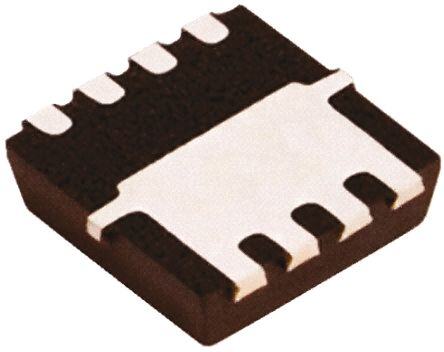
 Datasheet下载
Datasheet下载